Major project
InstaCampaign - Let's raise our voice against hate speech. [Read more]

InstaCampaign is a campaign that empowers Instagram users to support those affected by hate speech and learn about features to prevent it.
InstaCampaign is a campaign for young Instagram users (18-30) who need to feel responsible to show civil courage and stand up against hate speech without being vulnerable or high time expenditure and need to be informed how they can protect themselves and others, by providing a campaign and in-app feature that gives the opportunity to support affected ones online, show support offline, be part of a supportive community and provides info how to protect themselves and each other.
- Support people who suffered from hate speech over the past year but without making yourself vulnerable.
- Learn more about existing features that are provided by Instagram already.
- Spread the campaign and the message offline by purchasing and using the reusable coffee cups at a sponsor shop using the coupon you get after your participation.
- Stand together with others against hate speech and show affected users that the support drowns out the hate.

The Challenge
Hate speech generally describes statements that insult, devalue, threaten or attack people. It can be directed against individuals or social groups and can include both criminal and non-criminal statements. In addition to its positive features, social media platforms like Instagram, Facebook and Twitter, have also opened the doors to anti-social behaviour and hate speech. The perceived anonymity online and the feeling of power due to the large reach on social media platforms are two of the main reasons why online hate speech occurs.
The aim of this project was to find out how and why the problem arises, how it is currently addressed by different stakeholders, which methods exist already and what obstacles are currently in the way of combating the issue.
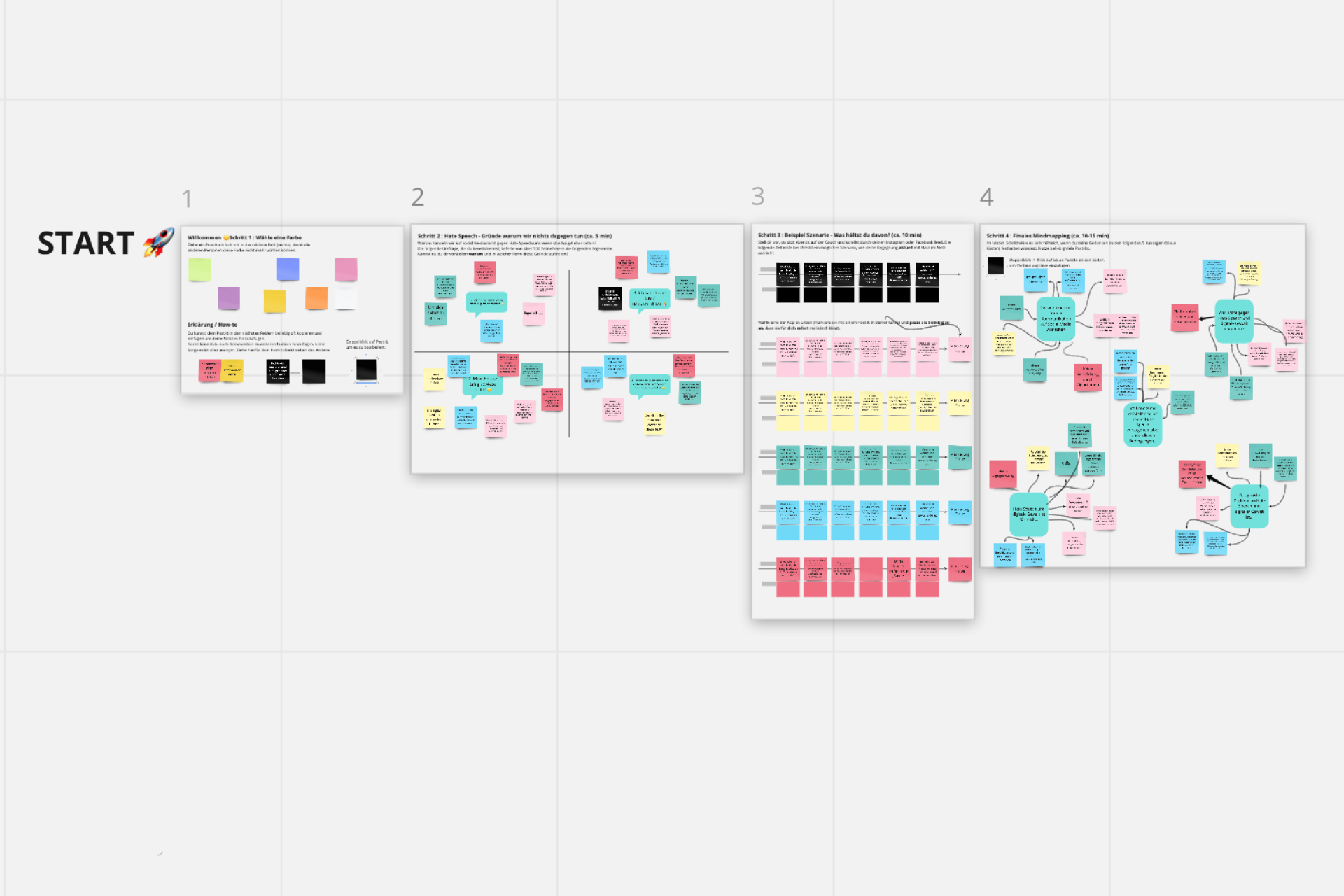
User Research
To gain qualitative insights on the current hate speech problem and barriers which prevent combating the issue, primary and secondary research was carried out. Due to the constraints of the Covid pandemic, all methods were conducted remotely.
Methods included:
- Four expert interviews with staff of preventive and victim-supporting anti-hate speech organisations to gain more knowledge about current methods against hate speech and motivations of actors.
- A survey with 112 participants from the user group of young social media users to gain more knowledge about their attitudes towards hate speech on social media platforms and their barriers to taking action against hate speech.
- Generative Research in form of an interactive Miro board (Picture), conducted with 5 social media users to gather deeper insights such as users' feelings and desires regarding hate speech on social media.
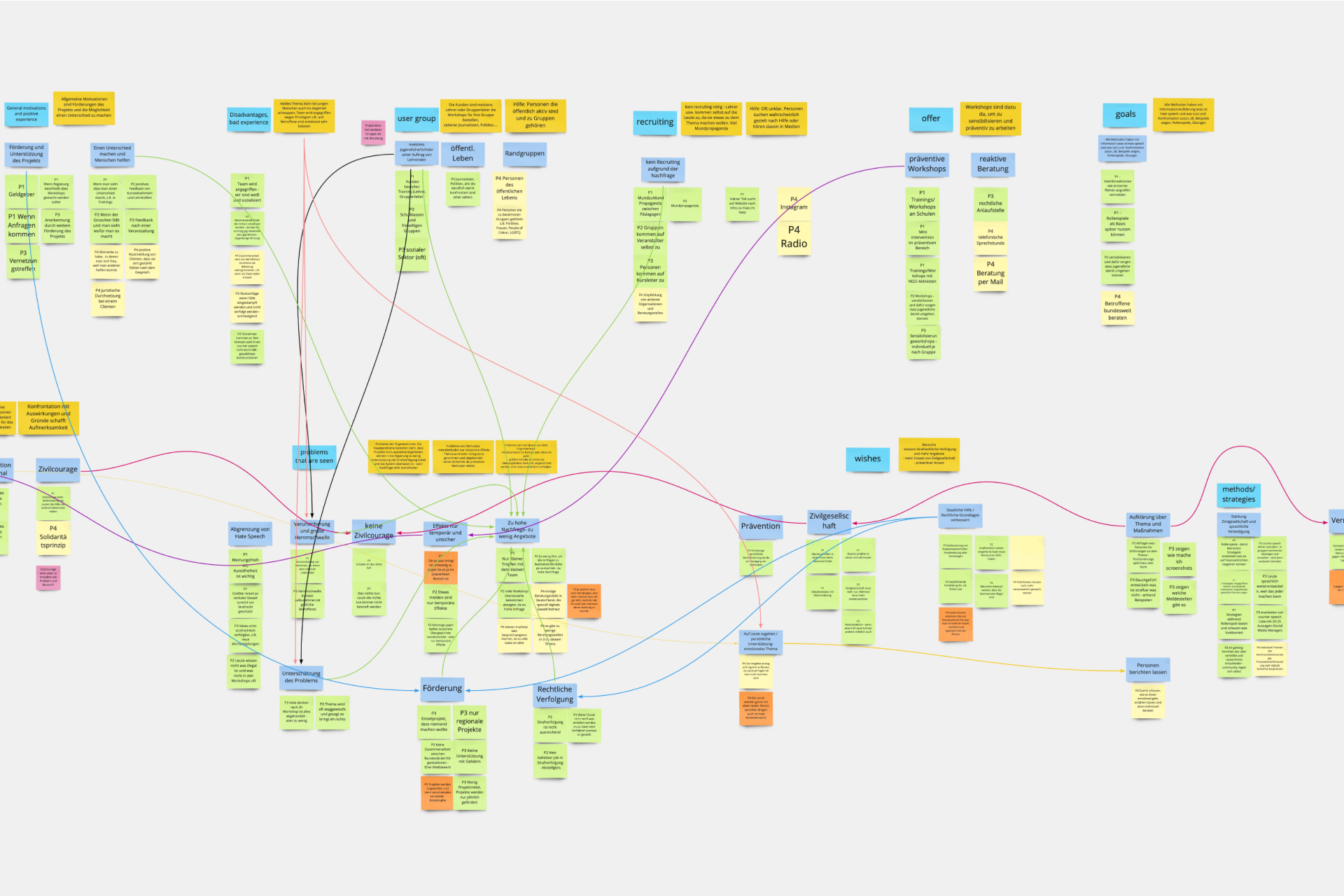
Key Insights and Opportunities
Data was collated and analysed using affinity mapping. Key Insights included:
- Empathy is Key: The general empathy for other social media users strengthens the wish for regulation but doesn't overcome existing barriers like vulnerability and high time expenditure.
- Mental Model - A Contradiction: Hateful people are on the one hand understood as unteachable but on the other hand, social media users see these people as responsible for the change.
- Curiosity and Distancing: An unsolvable problem like hate speech is not worth making effort and burdening one's own mental health and happiness. On the other hand, the topic raises social media users' interest.
- Missing support for organisations: Anti hate speech organisations suffer from insufficient capacities and can't meet the demand for support.
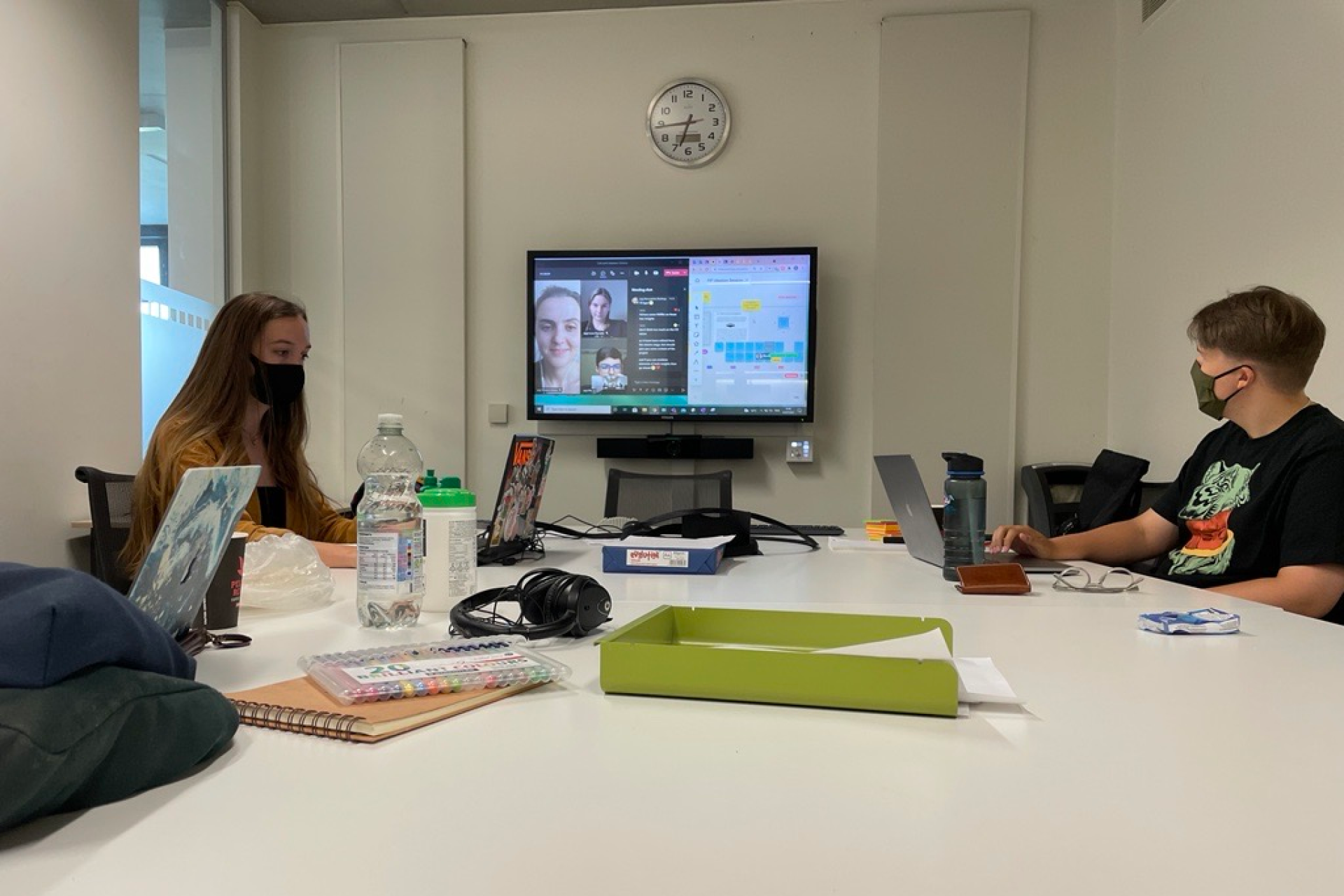
Ideation
Insights were turned into opportunity statements and “How Might We?” questions were generated to think of divergent solutions to the problem. In order to generate possible solutions, a collaborative Crazy8 workshop (Picture) was held with 5 other designers as well as a brainstorming session together with a target user.
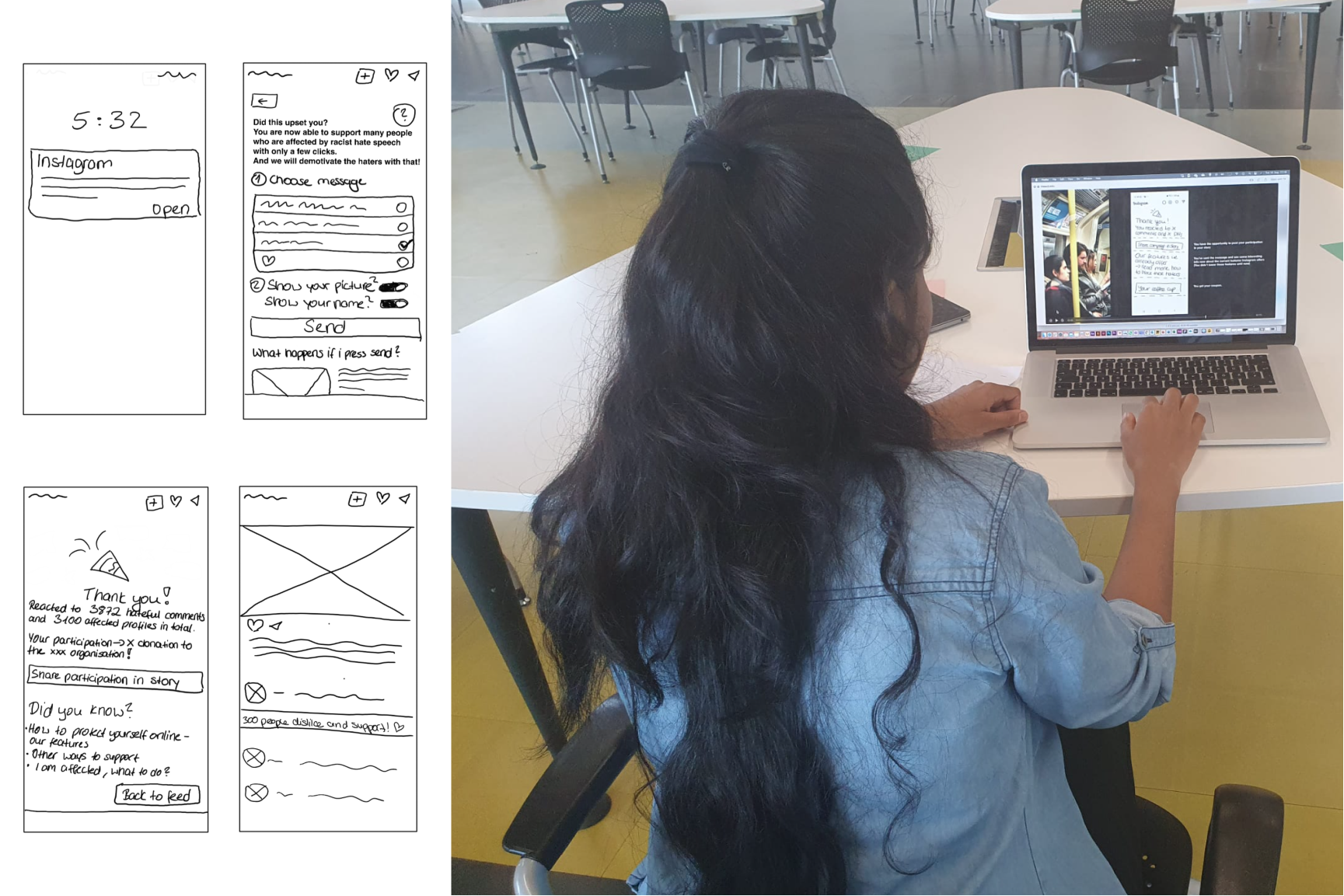
Concept Refinement
In order to refine the selected ideas from the ideation phase, first wireframes and a user journey map were created. These were in turn tested with target users applying experience prototyping and the concept was thus refined.
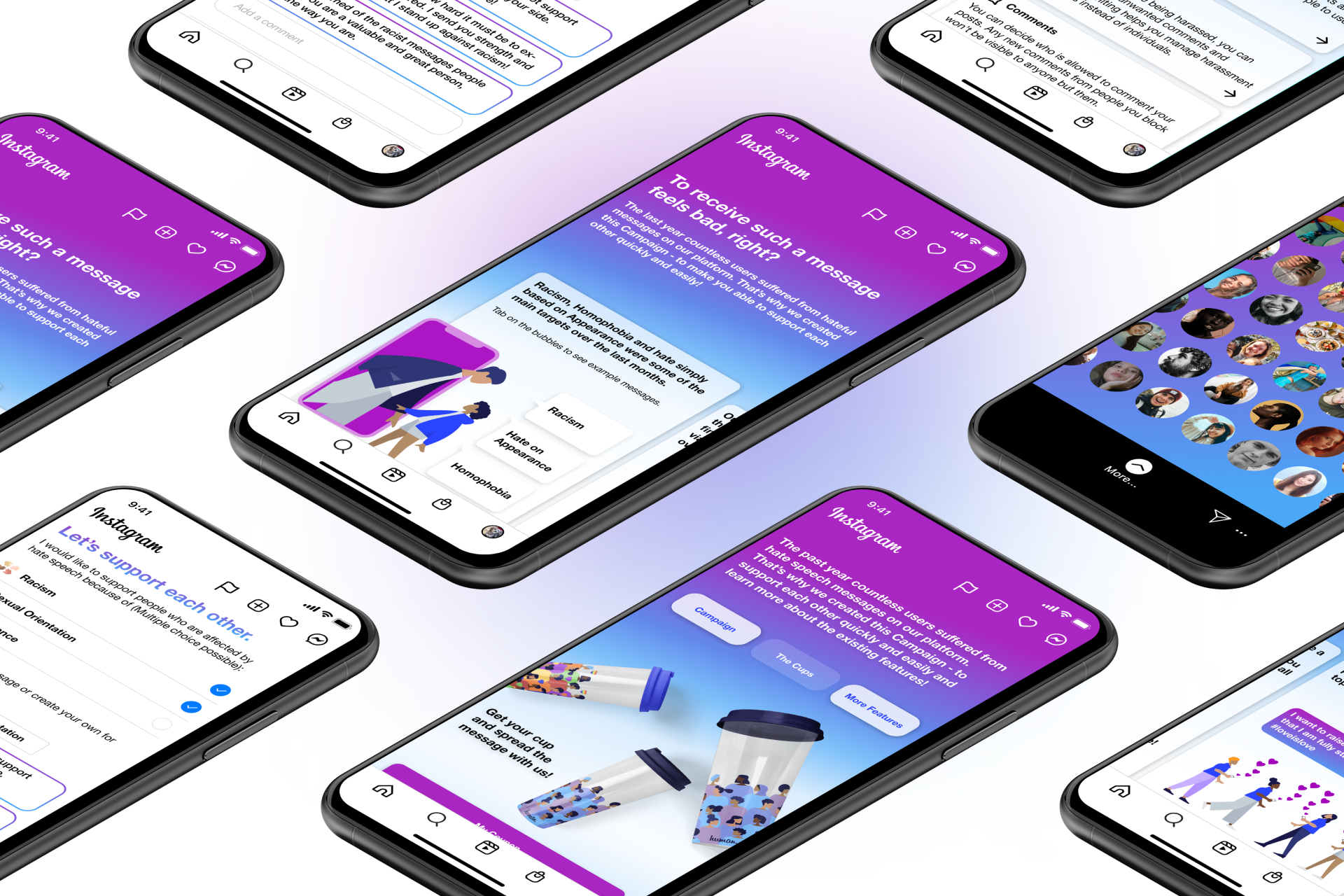
Final Concept - InstaCampaign
InstaCampaign is a campaign that is run annually to give Instagram users the opportunity to support people who have been affected by online hate speech in the past year with supportive messages. There is no risk to the users and they can quickly and easily support countless profiles with one click. On the other side, affected users get visualised how many people support them in form of an Instagram Story and on current affected posts. The campaign also raises awareness of the issue and the features Instagram already has in place to help users protect themselves and their friends from hate speech in the future.
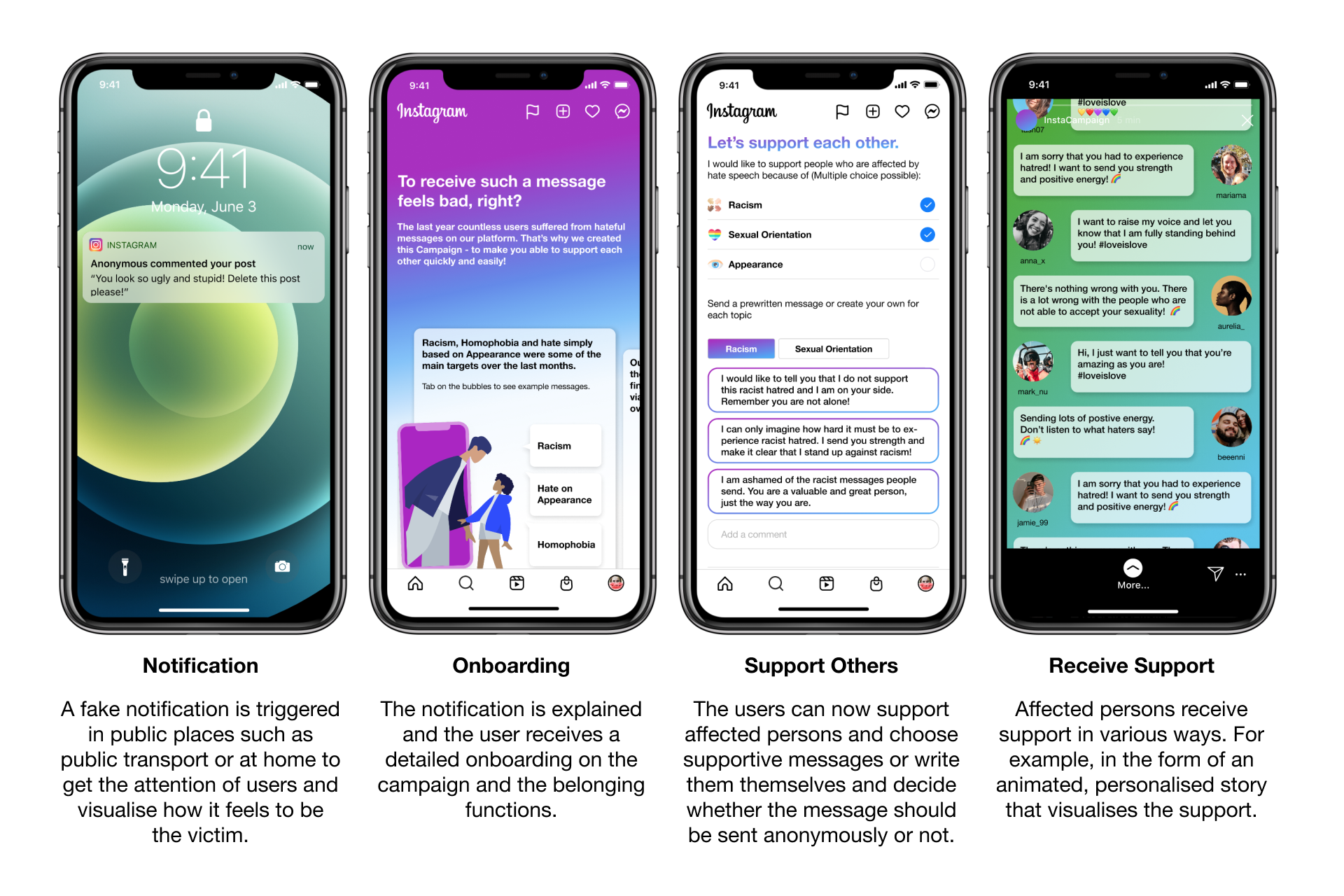
How it works
To draw attention to the campaign the users will see what it is like to be in the shoes of the victim and will receive an unusual notification, imitating a hateful comment they have received. This notification leads them to the campaign.
Another motivation and part of the campaign are the belonging reusable coffee cups, which spread a message of solidarity. By participating, the user receives a coupon that can be redeemed when buying a drink in a partner coffee shop. The aim is to spread the message offline as well. In addition, the purchase triggers a donation to anti-hate speech organisations.
Laura Humpfer
Originally from Germany, I studied Interaction Design at the University of Design Schwäbisch Gmünd for my bachelor's degree. During my studies and my work experience in UX departments of various companies as an intern, working student and in a premaster program, it was confirmed to me that my passion lies in this field. In order to deepen my skills and further develop myself both as a designer and personally, I decided to complete the master's programme in User Experience Design.
Through the course, I was able to expand my skills and gain confidence in working through the design process. These include design research methods, ideation methods, prototyping skills and usability testing skills. I also learned to act confidently as a designer during the process and, above all, to trust the process.
In addition, I was able to consolidate my values and standards as a UX designer through constant reflection. It is essential to me to use design in a meaningful way and to put humans and our environment in the foreground.
Major project
InstaCampaign - Let's raise our voice against hate speech.